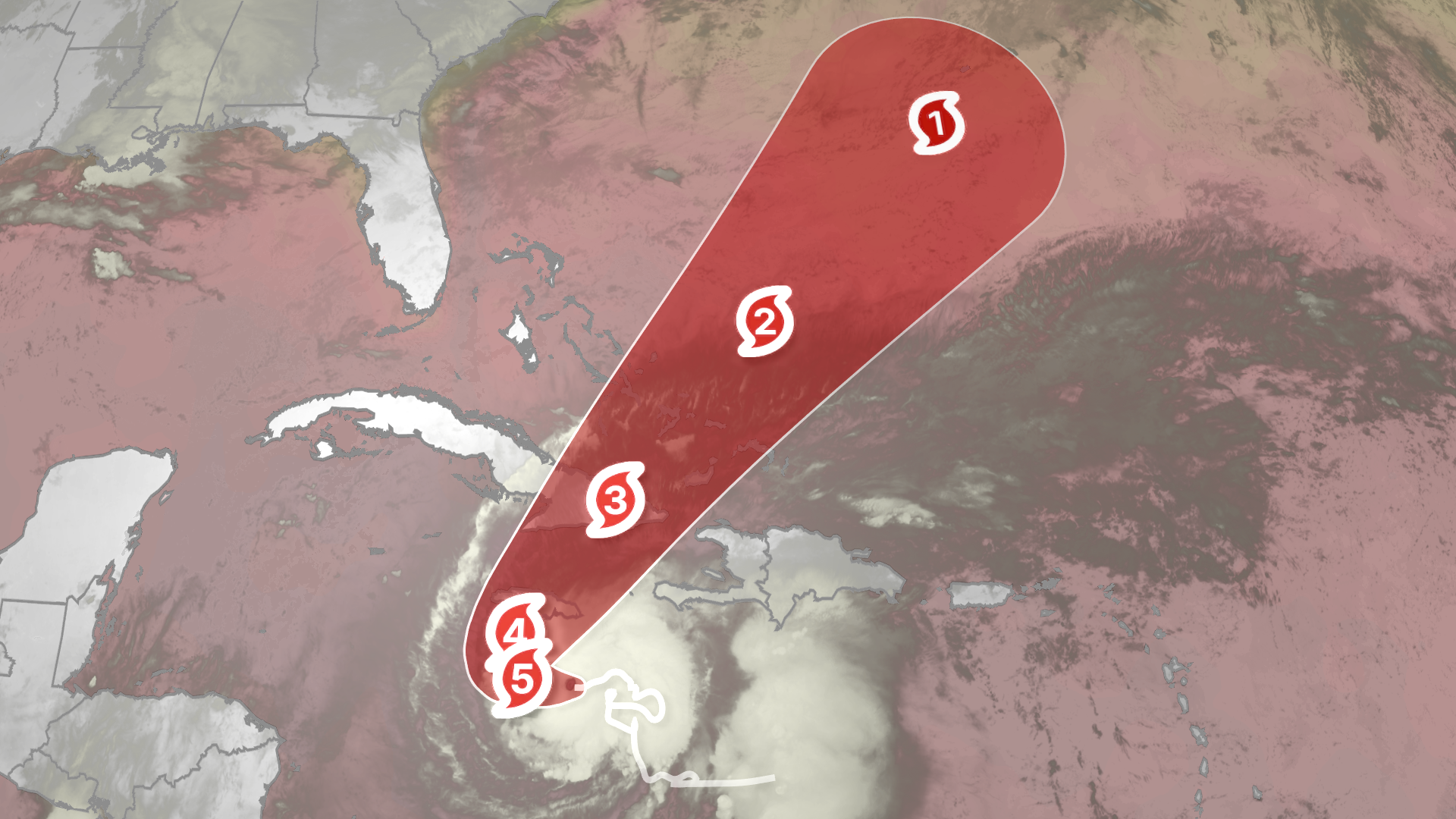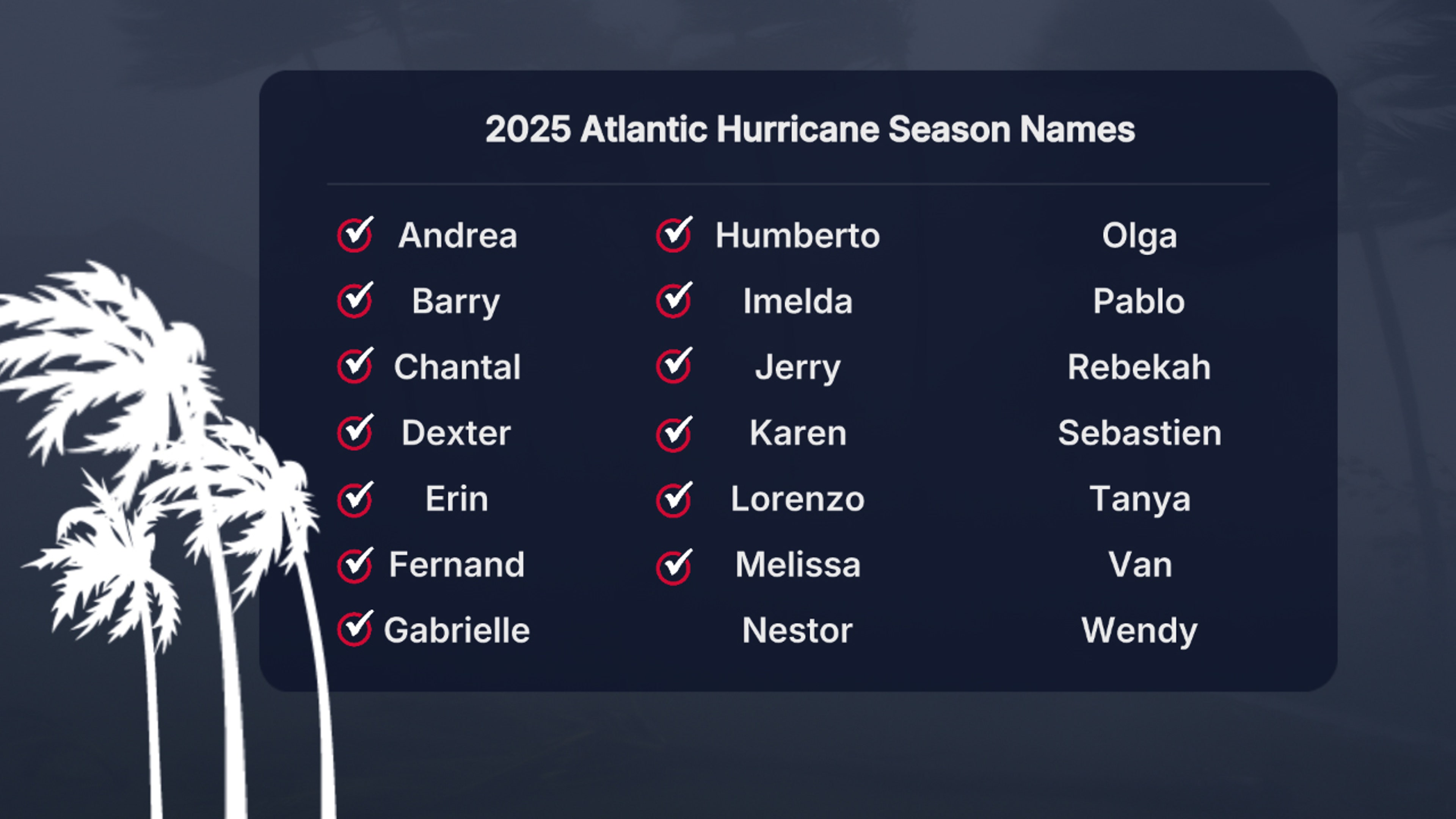Hurricane Melissa Forecast: Catastrophic Danger For Jamaica, Haiti

Current Satellite Image
Hurricane Melissa is currently undergoing “extreme rapid intensification,” according to the National Hurricane Center, increasing 70 mph in just 24 hours. Now a Category 4 storm, Melissa continues to strengthen. The storm is forecast to reach Category 5 status ahead of a catastrophic, multi-day strike on Jamaica with life-threatening flash flooding, landslides, destructive winds and storm surge.
Melissa’s torrential rain will also trigger catastrophic flooding in Haiti, and it will later strike eastern Cuba and parts of the Bahamas.
(MORE MAPS: Melissa Map Tracker)

Weather in your inbox
Happening Now
Hurricane Melissa’s center is just over 100 miles south of Kingston, Jamaica. The hurricane’s forward speed is roughly 5 mph, which is the main driver behind some of its biggest threats.
Melissa already rapidly intensified from a tropical storm to Category 3 hurricane in just 12 hours from late Saturday morning through Saturday night, then increased to a Category 4 on Sunday morning. Melissa will continue to strengthen.
(MORE: Rapid Intensification Is More Common Than You Think)
Outer bands of showers and thundershowers with heavy rain continue to streaming north across parts of Jamaica, Hispaniola and Cuba.
A Category 5 Floodmaker
Aside from its wind intensity, Melissa’s slow movement over the next several days will lead to prolific rainfall in parts of Haiti and Jamaica.
(MORE: Why Slow-Moving Storms Are The Worst)
The National Hurricane Center is warning that up to 40 inches of rain could fall in southern Hispaniola and Jamaica through Wednesday.
That torrential rainfall is likely to trigger widespread, life-threatening flash flooding and landslides, especially in hilly and mountainous terrain.
The National Hurricane Center warned that “extensive infrastructural damage, long-duration power and communication outages, and potentially prolonged isolation of communities” are likely in Jamaica and Haiti.
Heavy rainfall will also likely trigger life-threatening flash flooding and landslides in the Dominican Republic and eastern Cuba.
In addition to the rainfall flood threat, the NHC is forecasting a storm surge of 9 to 13 feet above ground level east of where Melissa is forecast to landfall along the southern coast of Jamaica early Tuesday.
This surge could affect parts of Jamaica’s capital city, Kingston, including Norman Manley International Airport, as Yale Climate Connections’ Jeff Masters noted.

Additional Rain Forecast
Forecast
Where It May Go
Melissa will drift slowly westward through early Monday, then curl northeastward and begin to move faster.
That track will likely bring the core of Melissa over Jamaica Tuesday, then into eastern Cuba Tuesday night or early Wednesday, then quickly through the southeast Bahamas or Turks and Caicos Wednesday.
Beyond that, it’s too soon to tell if Melissa would then become a threat to Bermuda late in the week.
How Strong?
Melissa is forecast to top out at Category 5 intensity and could hold at least Category 4 intensity at landfall in Jamaica, feeding on an ample supply of warm, deep Caribbean Sea water.
And that could make history.
According to NOAA’s historical database, though eight other Category 4 or 5 hurricanes have tracked within 60 nautical miles of Jamaica, there is no record of such an intense hurricane making a landfall, there.
The current intensity forecast for Melissa is denoted by the Saffir-Simpson Hurricane Wind Scale categories in the forecast path graphic below.

Current Status, Forecast Path
Wind Danger
According to the National Hurricane Center, hurricane conditions are expected in Jamaica by late Sunday or Monday and are possible in eastern Cuba Tuesday into Wednesday.
Tropical storm conditions are expected to move into Jamaica by Sunday morning, and these winds could persist for several days once they start.
(MORE: Not Too Late In Season For An Intense Hurricane)

Hurricane Wind Chances
The map below shows the latest watches and warnings in effect for Melissa.
A hurricane warning means hurricane-force winds are expected, and tropical-storm-force winds will move in within 36 hours.
A hurricane watch means those conditions are possible within 48 hours.
A tropical storm warning means tropical storm conditions are expected within the next 36 hours.
These alerts currently cover parts of southern Haiti, Jamaica and eastern Cuba.
According to the National Hurricane Center, these winds, together with widespread flash flooding, are likely to lead to extensive infrastructural damage, long-duration power and communication outages and potentially prolonged isolation of communities.

Watches And Warnings
Number 13
Tropical Storm Melissa formed late Tuesday morning, the 13th storm of the 2025 Atlantic hurricane season. By Saturday afternoon, it became the season’s fifth hurricane.
That’s roughly on par with the average date of the 13th storm from 1991 through 2020 (Oct. 25), according to the National Hurricane Center. It’s also one storm shy of the average number of storms for an entire season, 14.
However, it was almost a month later than the average fifth hurricane date of September 28.

The 2025 Atlantic hurricane season names list. Those storm names used up already have check marks next to them.
Melissa is also the first storm of the season to track into the Caribbean Sea. As you can see in the season-to-date tracks map below, most other storms and hurricanes have curled north of the Caribbean Sea this season.
That’s due either to steering winds in the Atlantic, or hostile conditions for development in the Caribbean Sea prior to Melissa.

2025 Atlantic Hurricane Season Tracks To Date
Check back with us at weather.com for the latest forecast updates on Melissa, and elsewhere in the tropics.
Jonathan Erdman is a senior meteorologist at weather.com and has been covering national and international weather since 1996. Extreme and bizarre weather are his favorite topics. Reach out to him on Bluesky, X (formerly Twitter) and Facebook.

